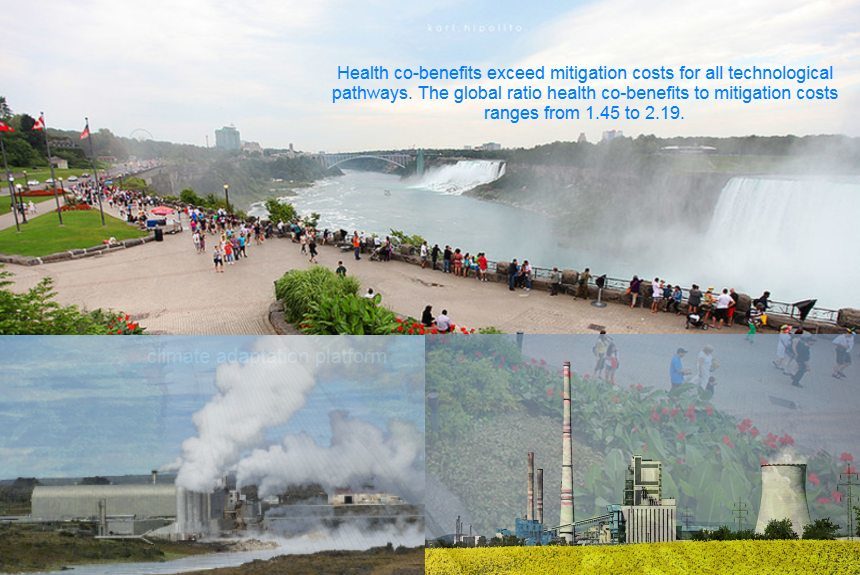Climate policies applying mitigating actions to lower greenhouse gas using alternative energy supply can also offer health benefits according to the study, “Health co-benefits and mitigation costs as per the Paris Agreement under different technological pathways for energy supply”.
Air pollution is the 5th biggest health risk, responsible for one in every 9 deaths annually according to the World Health Organisation (WHO). Some related studies present higher figures than the WHO. One of the main sources of air pollution is the combustion of fossil fuels which is also the source of greenhouse gas emission, the study states.
Policies aim to lower air pollution also lower greenhouse gas emissions and generate health co-benefits. Because of these, there is a growing interest in policies and research mitigation cost and health benefits.
The study employs an integrated framework that estimates the global and regional co-health benefits, mitigation costs, and trade-offs of various technological pathways for achieving the Paris agreement. These technology scenarios are based on the 5th assessment report of the Intergovernmental Panel on Climate Change (IPCC).
Climate mitigation technologies refer to the ways on how to reduce emissions through the use of the following energy sources: bioenergy, nuclear power, and carbon capture and storage (CCS).
For each mitigation pathways, different levels of energy mix are assumed.
The scenarios used in the study are the following:
- first, is the baseline scenario with no climate policy.
- second, a scenario with all available technology used without any limitation,
- third, where bioenergy is limited around the globe,
- fourth, low availability of carbon capture and storage (CCS) technology, and
- fifth, a nuclear phase-out scenario and no installation of new ones.
For each of the scenario, the study assessed the amounts of greenhouse gas emission and air pollutants with the associated mitigation costs and health benefits.
Air pollutants in the study cover the major pollutant species like black carbon, organic carbon, nitrous oxides, sulphur dioxide, carbon monoxide, ammonia, and non-methane volatile organic compounds. The sum of black carbon and organic carbon is what likely constitutes the fine particulate matter or PM2.5 which is the most harmful air pollutant in terms of its health damage.
Premature deaths attributable to PM2.5 are caused by ischemic heart diseases (IHD), chronic obstructive pulmonary diseases (COPD), stroke, lung cancer, and acute lower respiratory infection (ALRI).
The study shows that when there is no climate policy in curbing emissions, premature deaths increase continuously. Deaths will reach almost 4 million in 2050 and 3.2 million in 2030. Causes of deaths can be attributed to concentrations of air pollutants and increasing populations as population growth can also influence air pollution.
In general, the study shows that health co-benefits exceed mitigation costs when using different energy supplies across all emission reduction pathways. This result is also consistent with other studies that analyse different emissions targets.
The effects of climate policies on the amounts of air pollutant emission vary in countries and so does the health benefits.
The largest health benefits are found in China and India. India showing the largest benefit, and China benefits most in the mid-term or by 2030.
But in some developed countries like Canada, Australia, South America, and the USA with low population densities health benefits are not larger than mitigation costs because significant air pollution policies have already been implemented. The health co-benefits in these regions are not enough to compensate for climate mitigation costs.
Health benefits arising from mitigation policies can also be an incentive for decarbonization efforts especially in China and India where health benefits are high.
You may read the entire study by CLICKING on the link below:
Reference Citation:
Sampedro, J., Smith, S., Arto, I. et al (2020 March). Health co-benefits and mitigation costs as per the Paris Agreement under different technological pathways for energy supply. Environment International. Volume 136. Retrieved from https://www.sciencedirect.com/science/article/pii/S016041201933911X



Leave a Reply